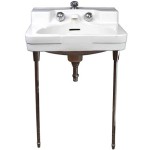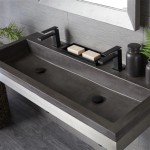How To Wire A Bathroom Extractor Fan With 2 Wires
Wiring a bathroom extractor fan is a task that often falls into the realm of electrical work typically handled by qualified electricians. However, understanding the principles involved and the steps required can empower homeowners to make informed decisions and potentially tackle the project themselves, *provided* they possess a solid understanding of electrical safety and local building codes. This article details the process of wiring a basic two-wire bathroom extractor fan, emphasizing safety precautions and offering essential information for a successful installation. It is crucial to reiterate that engaging a qualified electrician is always the safest and most recommended course of action, especially for individuals unfamiliar with electrical work.
Before commencing any electrical work, it is paramount to prioritize safety above all else. Electricity is dangerous and can cause serious injury or death if handled improperly. The first and most crucial step is to completely disconnect the power supply to the circuit you will be working on. This should be done at the main electrical panel by switching off the corresponding circuit breaker. To ensure the circuit is de-energized, use a non-contact voltage tester to verify that no electricity is flowing through the wires you intend to work with. This simple step can prevent potentially life-threatening electrical shocks.
Furthermore, wear appropriate personal protective equipment (PPE). Electrical work gloves are highly recommended to provide an added layer of insulation. Eye protection, such as safety glasses or goggles, is also important to shield your eyes from any potential debris or sparks. It is also advisable to work in a well-lit area to clearly see what you are doing. A headlamp can be particularly useful in dimly lit bathrooms.
The steps described in this article assume the existence of pre-existing wiring suitable for connecting the extractor fan. If new wiring needs to be installed, or if there are any uncertainties regarding the suitability of the existing wiring, a qualified electrician should be consulted. Moreover, this guide focuses solely on basic two-wire fans without timers, humidistats, or other advanced features. Wiring for more complex fans will differ and require a separate understanding.
Key Point 1: Understanding the Two-Wire System
A standard two-wire bathroom extractor fan typically utilizes a simple circuit consisting of a live (or hot) wire and a neutral wire. The live wire carries the electrical current to the fan motor, while the neutral wire provides a return path for the current, completing the circuit. In the United States, the live wire is typically black, and the neutral wire is white. However, it is crucial to verify the wire colors and their respective functions using a multimeter or voltage tester, as wiring conventions might vary depending on the age of the building and local regulations.
Prior to connecting any wires, identify the live and neutral wires from the existing wiring in the bathroom. This can be done using a non-contact voltage tester or a multimeter. With the power off, carefully separate the wires and test each one to ensure that neither is carrying any voltage. Once the power is restored *briefly* (only for testing purposes, then immediately turned off again), use the voltage tester to identify the live wire. Remember to exercise extreme caution when working with live wires, and always disconnect the power before proceeding with any actual wiring.
The extractor fan itself will also have two wires, one for the live connection and one for the neutral connection. The fan's wiring diagram, typically located on the fan housing or in the included documentation, will clearly indicate which wire is for live and which is for neutral. It is vital to follow these instructions precisely to ensure the fan operates correctly and safely.
Incorrect wiring can lead to the fan malfunctioning, posing a fire hazard, or even causing electrical shock. Therefore, double-checking the wire identifications is a non-negotiable step in the wiring process. If there is any doubt about the identification of the wires, consulting a qualified electrician is the only responsible course of action.
Key Point 2: Connecting the Wires Safely and Securely
Once the live and neutral wires have been identified on both the existing wiring and the extractor fan, the next step is to connect them securely and safely. The preferred method for connecting electrical wires is to use wire connectors, also known as wire nuts or terminal blocks. These connectors provide a secure and insulated connection, minimizing the risk of loose wires, short circuits, and electrical fires.
Before making any connections, strip the insulation from the ends of the wires on both the existing wiring and the fan's wiring. Use a wire stripper tool to remove approximately 1/2 inch (13 mm) of insulation from each wire. Be careful not to nick or damage the copper conductors beneath the insulation, as this can weaken the wire and increase the risk of it breaking over time. Using the correct size stripping notch on the tool is important to prevent wire damage. The stripped length needs to be sufficient for a secure connection within the wire connector.
With the insulation stripped, twist the bare ends of the corresponding wires together (live to live and neutral to neutral). Ensure the wires are twisted tightly and securely, creating a strong mechanical connection. Then, screw a wire connector onto the twisted wires, turning it clockwise until it is snug and secure. The wire connector should completely cover the bare wires, leaving no exposed copper conductors. A visual inspection confirms this is the case.
After securing the wire connectors, gently tug on each wire to ensure that the connection is solid and that the wires are not easily pulled out. If a wire comes loose, re-strip the wire, twist it tightly with the corresponding wire, and re-secure the wire connector. A loose connection can cause arcing, overheating, and potentially a fire. This is a critical step to prevent issues down the line.
Finally, carefully tuck the connected wires and wire connectors into the electrical box, ensuring that they are not pinched or stressed. Arrange the wires neatly within the box, allowing sufficient space for the extractor fan to be mounted properly. The wires should not be obstructing the fan's mounting mechanism. Careful wire management contributes to both safety and ease of maintenance in the future.
Key Point 3: Mounting the Fan and Testing the Installation
After the wiring is complete and the connections are secure, the next step is to mount the extractor fan to the ceiling or wall, following the manufacturer's instructions precisely. Ensure the mounting surface is structurally sound and capable of supporting the weight of the fan. Use appropriate screws or fasteners to securely attach the fan to the mounting surface. A loose or poorly mounted fan can vibrate, create noise, and potentially fall, posing a safety hazard.
Refer to the manufacturer's instructions for the specific mounting procedure for the fan model being installed. Pay close attention to any requirements for sealing around the fan to prevent air leakage and ensure proper ventilation. Gaps around the fan can compromise its effectiveness and allow moisture to escape into the ceiling or wall cavity, potentially leading to mold growth.
Once the fan is securely mounted, restore power to the circuit by switching the circuit breaker back on. Carefully observe the fan to ensure that it starts up and operates smoothly. Listen for any unusual noises or vibrations that might indicate a problem with the installation. If the fan does not start, immediately turn off the power and re-check the wiring connections. The fan should be running quietly and effectively extracting air from the bathroom.
After the fan has been running for a few minutes, check for any signs of overheating or electrical problems. Smell for any burning smells, and feel the fan housing to see if it is excessively hot. If any issues are detected, immediately turn off the power and consult a qualified electrician to diagnose and repair the problem.
Finally, test the fan's effectiveness by observing how quickly it clears steam and moisture from the bathroom after a shower or bath. A properly functioning extractor fan should significantly reduce humidity levels in the bathroom, preventing mold growth and improving air quality. If the fan is not performing as expected, re-check the installation to ensure that it is properly sealed and that the ducting is correctly routed to the outside.
If at any point during this process, uncertainty arises, or if any complications are encountered, immediately cease work and consult a qualified electrician. Electrical work carries inherent risks, and it is always better to err on the side of caution. The safety of oneself and others should be the absolute priority.

Extractor Fan Wiring Diywiki

Extractor Fan Wiring Diywiki

How To Wire A Bathroom Extractor Fan With Timer Diy Doctor

Extractor Fan Wiring Diywiki

Extractor Fan Wiring Diywiki

Understanding Extractor Fan Wiring

How To Install A Fan Isolator Switch Socketsandswitches Com

Bathroom Fan Wiring Exhaust

Replacing A Bathroom Light Fan Switch Connections Diynot Forums

How To Wire An Extractor Fan Or A Second Light From Ceiling Rose And Pendant
Related Posts







